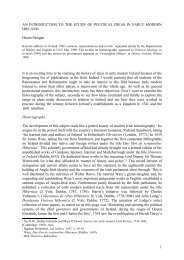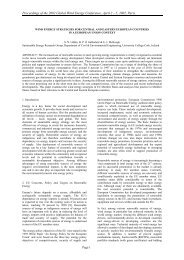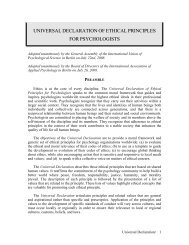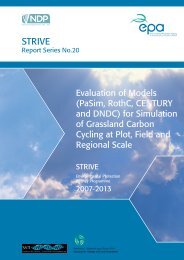Understanding Criminal Behaviour: Beyond Red Dragon - University ...
Understanding Criminal Behaviour: Beyond Red Dragon - University ...
Understanding Criminal Behaviour: Beyond Red Dragon - University ...
You also want an ePaper? Increase the reach of your titles
YUMPU automatically turns print PDFs into web optimized ePapers that Google loves.
The statistical procedures used vary enormously from Linear Discriminant Function<br />
Analysis and Logistic Regression (Davies et al., 1997; Smith 1990) through<br />
Multidimensional Scaling and Cluster Analysis (Canter & Heritage 1990; Grubin, Kelly<br />
& Brundson, 2001) to the more statistically sophisticated Baysian Belief Networking<br />
(e.g. Aitken et al., 1996).<br />
One of the more prolific advocates of the data driven approach is Professor David Canter<br />
at the <strong>University</strong> of Liverpool; he is one of the leading advocates of the development of<br />
‘investigative psychology’ in the UK. Canter (1989; 1994) encourages an empirical<br />
approach to profiling based on the collation of offence and offender characteristics and<br />
their subjection to statistical modelling in order to support any inferences of profile<br />
characteristics. The technique primarily employed by Canter and his colleagues (e.g.<br />
Canter & Heritage 1990) was multidimensional scaling (MDS) in which offences and/or<br />
their features were represented as points in space. The closer two points are found to be<br />
the more similar they are assumed to be. The specific techniques employed by Canter<br />
and his team derive from the work of Louis Guttman who developed the principle of<br />
‘smallest space’ (Guttman, 1968). Thus the MDS methods typically used are usually<br />
known as ‘smallest space analysis’ (SSA). Such an approach is essentially a way of<br />
developing a categorisation system of offender behaviours (e.g. violent behaviour,<br />
impersonal behaviour, intimacy behaviour etc.) thought to be crucial to understanding the<br />
interaction between offender and victim. As such it is a procedure for identifying and<br />
recognising patterns in large, complex datasets (Salfati, 2000). A major advantage of<br />
this data analytic approach over many of the others is that MDS is very forgiving of<br />
sparse and ‘muddy’ data, making very few assumptions about distributions or sample<br />
size.<br />
The data from each offence are inputted into the model and the profiler may be able to<br />
ascertain the likelihood of a series of offences. Where some surface elements may ‘flag’ a<br />
possible series, SSA attempts to assess the statistical probability of the offence being<br />
committed by the same offender, owing to similarities and trends in offender-victim<br />
interaction styles, before, during, and after the commission of the offence (also see Canter<br />
& Larkin, 1993).<br />
On the surface, the fact than an approach to profiling has proceeded with due caution paid<br />
to developing a theoretical basis is regarded as a positive development. Such an<br />
approach, if valid, would see the relative subjectivity of clinical judgement removed from<br />
the profiling process. This is because the profile would be rooted in empirical research<br />
and statistical probabilities deriving from a datapool of known offenders. What<br />
distinguishes the statistical approach however, and this is indicative of how openly<br />
critical Canter is of the FBI approach, is explained by Howitt (2002): the objectivity of<br />
such an approach may indeed represent a favourable feature, but the conclusions from<br />
such profiles may “not necessarily [be] more helpful to the investigators” (p.219), with<br />
the possibility of missing “salient features of individual cases” (Silke, 2001, p.245) an<br />
inevitable result of generalising across such large datasets (also see Turvey, 1999).<br />
9
















